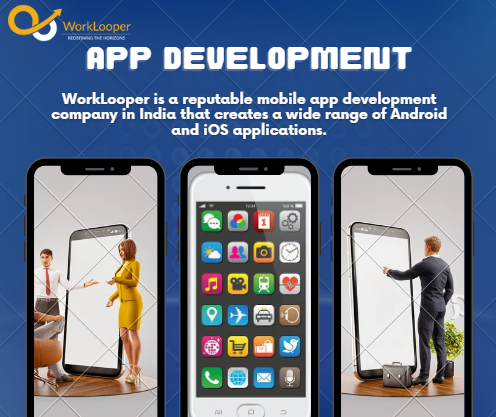In the dynamic landscape of the digital age, mobile applications have become an integral part of our daily lives. From social networking to productivity tools, entertainment, and beyond, the world of mobile apps is vast and continually evolving. In this blog, we'll explore the fascinating realm of mobile app development, delving into its significance, the development process, and the future trends that promise to shape the mobile app landscape.
The Significance of Mobile App Development:
Mobile apps have revolutionized the way we interact with technology. Whether on iOS or Android platforms, these applications have streamlined communication, enhanced productivity, and brought entertainment to our fingertips. The significance of mobile app development lies in its ability to cater to diverse needs, providing users with personalized and efficient solutions.
The Development Process:
Idea Generation:
Every successful mobile app begins with a compelling idea. Whether it addresses a specific problem or fulfills a particular need, a clear concept is the foundation of a successful app.
Market Research:
Understanding the target audience and market trends is crucial. Thorough market research helps developers identify potential competitors, user preferences, and market gaps, shaping the app's features and design.
Design and Prototyping:
The design phase involves creating the app's user interface (UI) and user experience (UX). Prototyping allows developers to visualize the app's flow and functionality before actual development begins.
Development:
This is the coding phase where developers bring the design to life. The choice of programming language (Swift, Kotlin, etc.) depends on the platform (iOS, Android) and the app's requirements.
Testing:
Rigorous testing is essential to ensure the app functions seamlessly. Testing involves identifying and fixing bugs, checking for performance issues, and ensuring compatibility across various devices.
Deployment:
Once the app is thoroughly tested and refined, it is ready for deployment on the respective app stores – Apple App Store for iOS and Google Play Store for Android.
Post-launch Support and Updates:
The journey doesn't end with the app's release. Continuous monitoring, user feedback analysis, and regular updates are vital to keep the app relevant, secure, and user-friendly.
Future Trends in Mobile App Development:
Artificial Intelligence (AI) and Machine Learning (ML):
Integration of AI and ML technologies is set to redefine user experiences, enabling apps to provide personalized content, predictive analytics, and enhanced automation.
5G Technology:
The rollout of 5G networks will significantly impact mobile app development, offering faster speeds and improved connectivity for resource-intensive applications like augmented reality (AR) and virtual reality (VR).
Internet of Things (IoT) Integration:
The interconnectivity of devices will continue to grow, leading to a surge in IoT-integrated mobile applications that facilitate seamless communication between smart devices.
Augmented Reality (AR) and Virtual Reality (VR):
AR and VR technologies are becoming increasingly sophisticated, opening new possibilities for immersive gaming, educational apps, and virtual experiences.
Conclusion:
As mobile app development continues to evolve, developers are tasked with not only meeting current user needs but also anticipating future trends and technological advancements. The journey from ideation to deployment is a meticulous process that requires a balance of creativity, technical expertise, and a deep understanding of user behavior. In a world driven by innovation, mobile app development stands as a testament to the power of technology in enhancing our daily lives and shaping the future of digital experiences.




No comments:
Post a Comment